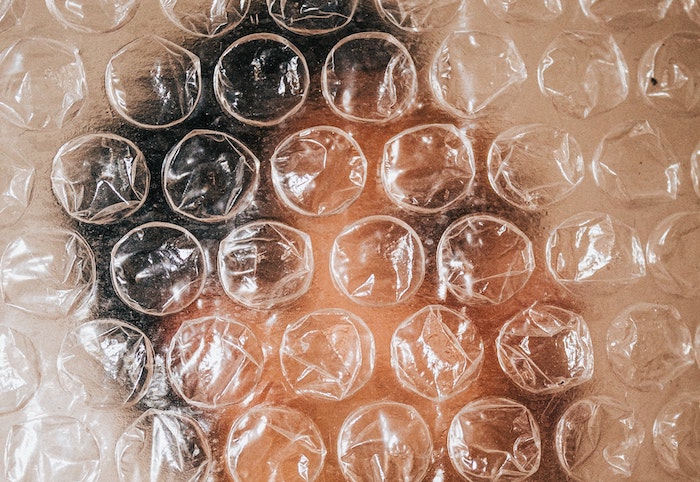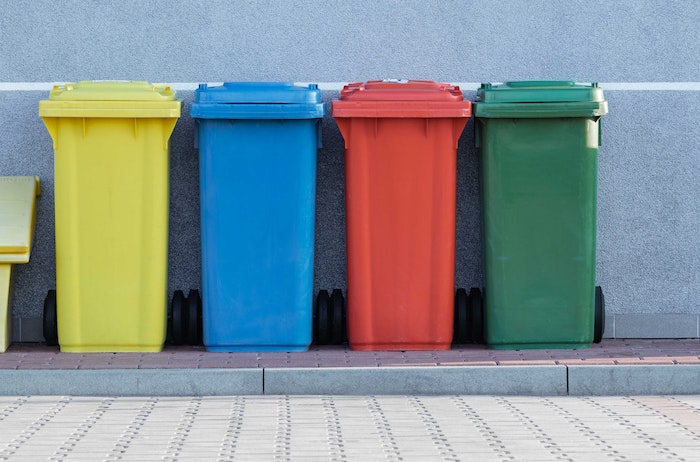Is Bubble Wrap Recyclable?
Bubble wrap is recyclable and there are a number of different ways to make sure it is disposed of properly.
This article is more than 2 years old
Each and every time we move, each time we need to ship something or when packages are delivered, bubble wrap makes an appearance. As online shopping continues to grow, the increase of bubble wrap in homes is becoming noticeable. So, as more bubble wrap makes its way into the home, do you simply throw it in the trash or stop and ask yourself: is bubble wrap recyclable?
BUBBLE WRAP IS RECYCLABLE

If you were ever wondering is bubble wrap recyclable, the quick and short answer is yes. While it is recyclable, there are a few steps worth noting in understanding just exactly how to recycle bubble wrap. Let’s dig in.
First of all, as mentioned, bubble wrap is absolutely recyclable, but it is not recycled the way most other plastics are recycled. What this means is that it cannot be grouped with home or business recycling, and it cannot be accepted curbside. So, what makes bubble wrap different from other recyclable plastics?
The question is bubble wrap recyclable starts when taking a look at your recycling bin. It is probably filled with what is known as hard plastics. These include containers, jugs, and water bottles. This type of plastic can be recycled curbside and is most commonly classified as Resin Identification Codes (RIC) #1 or #2.
These numbers indicate how certain plastics are made up. The lower range, and harder plastic numbers indicate that the plastic was made from high-density polyethylene or from polyethylene terephthalate. Bubble wrap is made from neither of those which is why folks wonder is bubble wrap recyclable.
Is bubble wrap recyclable as a plastic film? Well, that’s how it is classified. There are a number of other plastic films that include bread bags, soft plastic wrappers, shrink wrap, and plastic bags. Bubble wrap fits neatly in this classification.
As far as categories go, bubble wrap is classified as a RIC #4. This means that it is made of low-density polyethylene (LDPE). This type of plastic should not be placed in curbside recycling.
Plastic films, such as they are, are well known as recycling system contaminants. which is why folks wonder is bubble wrap recyclable. The reason being is that soft LDPEs have been known to clog the machines that process this plastic recycling. A clogged machine becomes a threat to both the machine and the recyclers who run them.
One place you want any plastic film to avoid is the landfill. There, they can do some damage. It is estimated that plastic bags, for example, can take anywhere from 10-1,000 years before those little buggers will completely decompose.
With that being said, bubble wrap is still recyclable. So, make sure to group it with other soft plastics. Once you do that, there are designated drop-off areas for all plastic films.
THERE ARE PLACES TO TAKE YOUR BUBBLE WRAP FOR RECYCLING

Is bubble wrap recyclable if we aren’t supposed to mix it with hard plastics and it can’t be set out for curbside pickup? Just where do we take bubble wrap to make it recyclable? The local grocery store is one place that offers plastic film (including bubble wrap) recycling. They should have plastic film recycling bins toward the front of the store.
Another place that will take bubble wrap in for recycling is the local UPS store. As a last resort if you can’t find a place to take the bubble wrap recycling is to ship back the bubble wrap to Sealed Air (who we’ll talk about shortly), the company that branded bubble wrap. Speaking of Sealed Air, let’s take a look back at where bubble wrap came from.
BUBBLE WRAP HAS BEEN AROUND FOR 65 YEARS
Though they likely weren’t concerned at the time about whether or not is bubble wrap recyclable, Arthur Fielding and Marc Chavannes invented bubble wrap in Hawthorne, New Jersey back in 1957. Their original goal was to make wallpaper when Fielding and Chavannes sealed together two shower curtains. But once together, the shower curtains created a bunch of air bubbles in them, making them undesirable as wallpaper.
After they were told no as far as wallpaper, Fielding and Chavannes then marketed their invention as greenhouse insulation. The two knew they were on to something though and in 1960, they formed Sealed Air Corporation. Bubble wrap was on its way.
Fielding and Chavannes didn’t let the failure of their wallpaper idea dissuade them. They knew there was some use for their sealed air shower curtains and finally realized that what they wanted to be wallpaper was actually better as packing material. Is bubble wrap recyclable wasn’t even a thought here.
Their bubble wrap was a hit. Sealed Air Corporations’ very first client was IBM, which used bubble wrap packing material to protect the IBM 1401 computer during its shipment. The rest, as they say, was history.
THERE ARE OTHER WAYS TO RECYCLE IT
Of course, there are a number of different ways to recycle bubble wrap if taking it down to the local grocery store doesn’t work. The easiest way to recycle it is to simply reuse it. As long as you aren’t one of those who loves to sit and pop bubble wrap, the material is easy to reuse.
One good way to recycle is to turn it into a virtual burglar alarm. Just take the bubble wrap and lay it on the floor underneath the windows. If someone should ever try to break in, you’ll hear the pop, pop, pop as they step all over it.
Another good way to recycle bubble wrap is to use it as protection from bruising for fruits and vegetables. Simply put a layer of it inside a fruit bowl so that when the fruit is added to it, the bubble wrap will stop the fruit from bruising. You can do the same with vegetables such as tomatoes.
One last way to recycle bubble wrap is to use it as a source of insulation. For example, bubble wrap can be used to insulate grocery bags. Cover the food from the freezer or cold sections of the grocery stores to keep foods cold and on warm days, it will also protect ice cream.
So, is bubble wrap recyclable? Definitely. But if you can’t find a place to take it, there are a number of different ways one can recycle it. And if worse comes to worst, there is always popping it.




